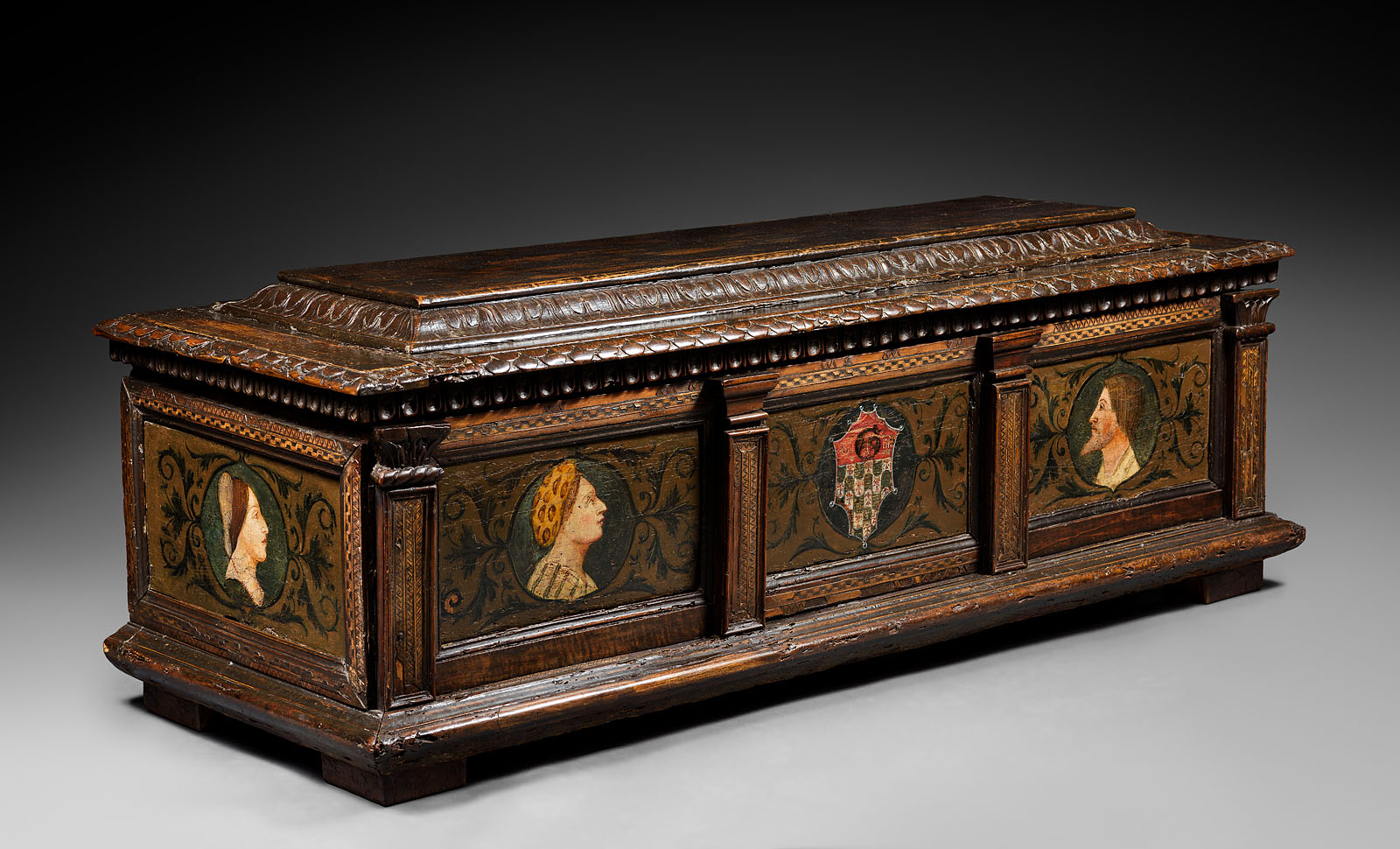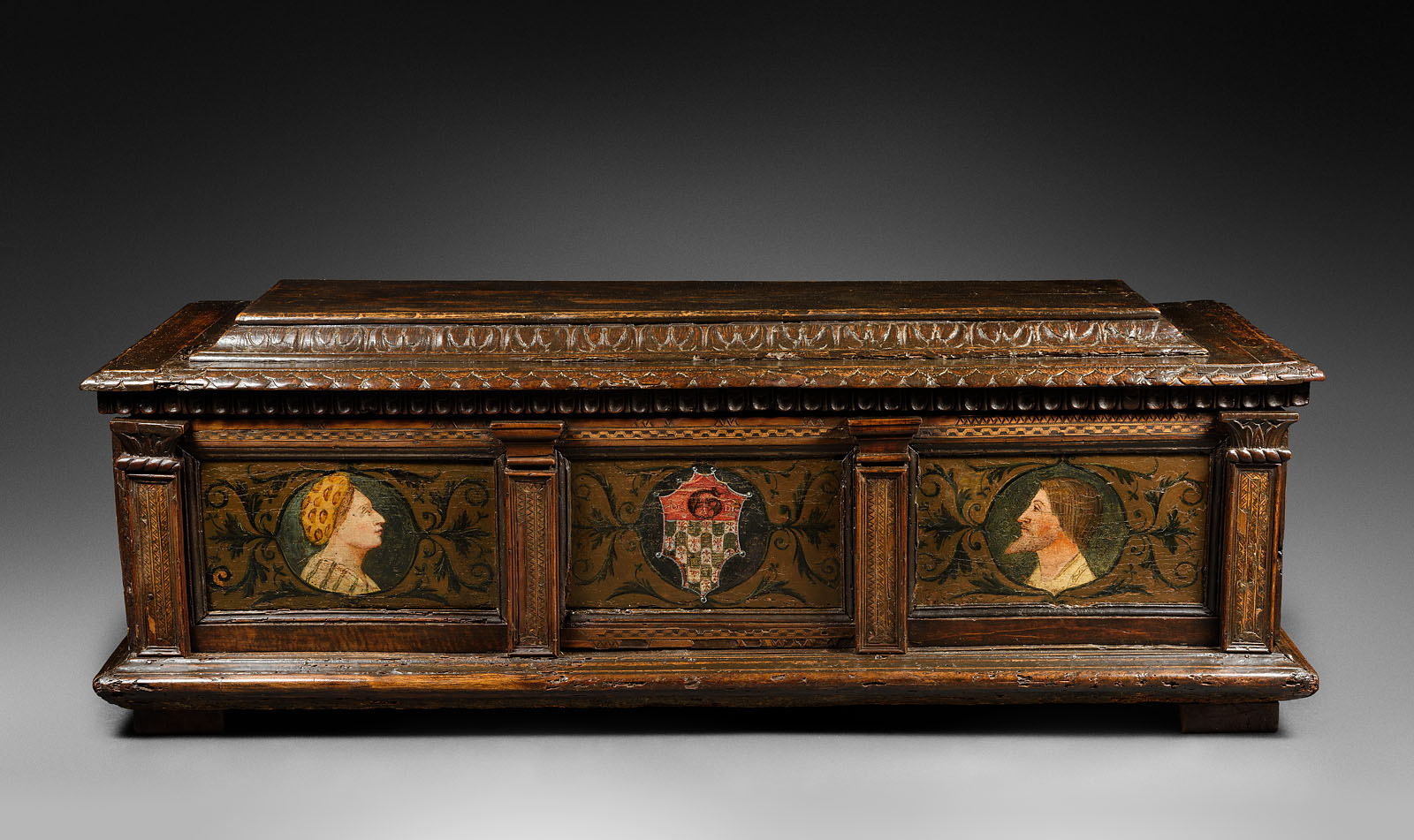Description
Expression of a family alliance, the wedding chest gathers important elements of the bride’s trousseau like clothes, books, dishes, gold and silver. Families commissioned famous artists for its design.
The front side is composed of three painted panels separated by nice carved columns. The central one shows the coast of arms of the families, whereas the two others present their portraits.
Articulated in a ternary rhythm, the cassone is entirely adorned with paintings inserted into casings flanked by doric and corinthian columns. The lateral panels show the profile’s faces of the young couple and the central one shows the coat of arms of the twice families. Each panel is borded by a double frieze made of certosina marquetry, meanings incrustations of light and dark woods following geometrical patterns. The pilasters and capitals coming from the columns are also adorned with this kind of certosina marquetry.
The stepped rectangular hinged top is carved with a frieze of leaftips and a large moulded border adorned with scales.
The two sides of the cassone are adorned with two others portraits, one of a woman, a second one of a bearded man, really typical from the Italian Renaissance style.
The young engaged couple are shown in profile with traditional local colors. Contrasting from a green background they are insert in a medallion depicted with nice foliage scrolls. The quality of the execution, the composition and the polychromy remind us the early Italian paintings from the Quattrocento. Serenity of the face’s profiles, features of the characters, and headdress evoke Northern Italy.
The coat of arms
The coat of arms in the central panel symbolise the union of the two families.
The colors, patterns and their disposition allow to situate this cassone in the area between Bologna and Milano, and justify the date of creation.
The nice proportions, the quality of walnut wood and the richness of the paintings, place this cassone among the rare pieces of furniture from the Northern Italy of 15th century.


